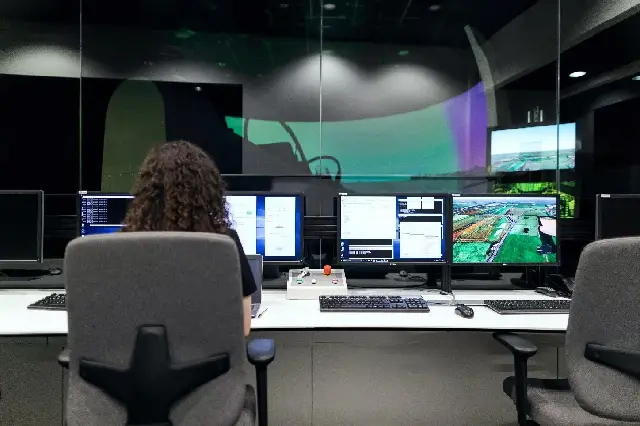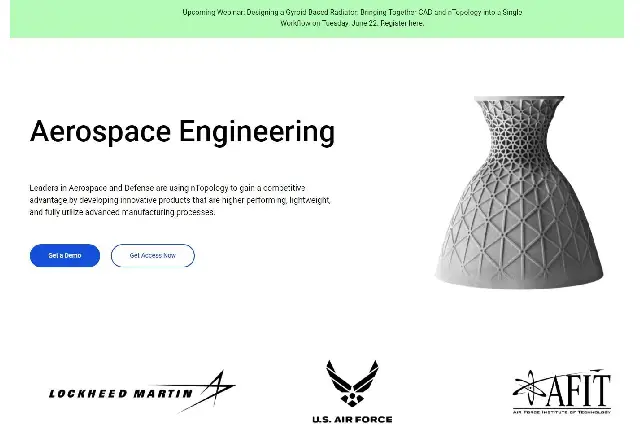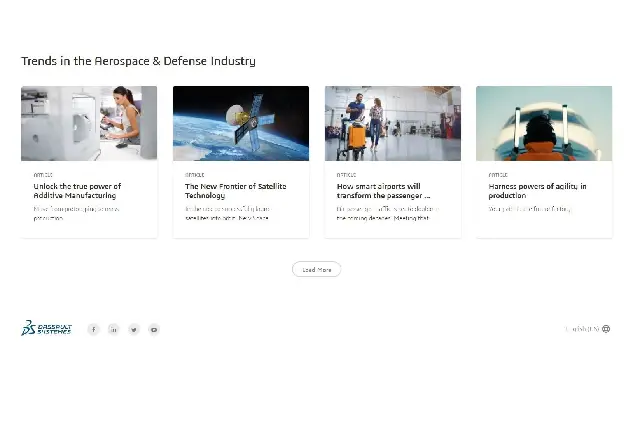Aerospace engineers need to design a giant cabin that carries hundreds and takes off into the air. This isn’t all, though. A lot more goes into it. They also carry sophisticated electronics and electrical systems that have taken decades to develop. Get this – an Airbus A380-800 weighs 611,000 lbs. Mind-blowing, isn’t it?
This gives a fair idea of how clever aerospace engineers have to be. They put together several tons of electronics, glass, aluminum, and some other stuff to build a huge flying machine! They certainly need to use software to make life easier.
Accomplishing this without software isn’t impossible – that’s how it was done in the previous century. However, the technology provides engineers with ample power to finish such projects far more quickly.
Time and money are valuable assets, especially for huge corporations in the aerospace industry. Investing in software is much more prudent than losing all that time and money to inefficiency for large companies, and so engineers must have hands-on experience with such software, too.

Also Read: Unconventional Career options after engineering
Software for Aerospace Engineers
Without software, an aerospace engineer’s life can be nightmarish. Imagine using 611,000 lbs. of raw material to build an airplane and things don’t work out. It wastes everybody’s resources and time.
For as long as one can remember, the only way to design an aircraft was using computer-aided design (CAD) software. CAD is still heavily in use, and it’s not going anywhere. However, CAD is often expensive and inaccessible to hobbyists. They are more accessible to engineers and engineering students.
However, even hobbyists and other non-engineering enthusiasts have an alternative to CAD now. As the industry grows, software alternatives are growing, too. Again, CAD isn’t going anywhere. In fact, the next enhancements in the CAD space have come as 4D CAD that delivers improved operational performance for final renders.
7 Top Software Every Aerospace Engineer Must Know
Now that the importance of software for aerospace engineers has been established, let’s look at some software that every aerospace engineer must know. Functionalities of software make an aerospace engineer’s work much easier and bring efficiency to it.
1. nTopology
A part of the software arsenal of entities like Lockheed Martin and the U.S. Air Force, nTopology is an aerospace engineering software that offers a range of solutions for aerospace engineers. The software can be used for various aerospace and defense applications such as structural lightweighting, architected materials, rapid design exploration, and advanced manufacturing.

In addition to capturing design intent, nTopology also processes the steps taken to get there. nTopology’s architected materials leverage lattice structures for achieving special material properties. This helps engineers maximize part performance and create previously unattainable combinations of properties.
2. OpenVSP
OpenVSP (Vehicle Sketch Pad) is a NASA-developed open-source software for aircraft design. It’s a parametric aircraft geometry tool that aerospace engineers can use for creating 3D models for aircraft. The tool is quite intuitive, and if an engineer has experience in the industry, it should be fairly easy to work with.
It’s worthwhile to also quickly look at VSP Hangar, the community database where engineers can seek inspiration from other 3D models. While it’s extremely easy to use, it’s best to get some initial help to break into it.
3. SharkCAD Pro
SharkCAD Pro is a modeling software that aerospace engineers can use for 3D printing, animation, drawing, or rendering. The software is equipped with a range of design tools for mesh, surface, solid, and curve modeling. While the original software isn’t tailor-made for the aerospace industry, engineers can use a plug-in that adds a lot of power.
The AeroPack plug-in has been developed by DARcorporation and offers aerospace engineers some nifty tools for aircraft modeling. The CAD software, combined with the plug-in, allows engineers to work on 2D and 3D files with added accuracy.
4. CATIA
Read any aerospace engineering job description, and there’s a good chance that CATIA will be mentioned as a requisite skill. CATIA enables OEMs to take advantage of composite materials for extracting the best value from them in manufacturing and design.

CATIA is an absolutely non-negotiable software to learn for aerospace engineers. Companies, too, prefer using CATIA because of the advantages it offers, such as:
- Saving money and time
The relational design change management functionality in Catia V5 uses automatic updates. This reduces the change’s impact on the entire process from design to manufacturing.
The automatic updates eliminate the need to start over the entire design process, which translates to significant savings of time and money.
- Support for geometrical configurations
Aerospace engineers know that geometrical configurations of composite parts can increase the design’s complexity significantly, consequently making the design more prone to errors in the design’s accuracy.
However, CATIA Composites Design 3 (CPD) is capable of supporting various composite configurations’ designs. It allows management of multi-part geometries, such as core-stiffened parts, more efficiently in comparison to standard composites design solutions.
- In-depth productibility checking
CATIA’s in-depth productibility checking enables engineers to predict the composites’ behavior across a complex surface.
For instance, engineers can predict issues related to manufacturing like wrinkles, and take measures required for correcting the issues. This helps minimize costs and wastage of time when producing high-quality parts.
5. Inventor
Inventor is a popular CAD software developed by Autodesk. It’s quite literally impossible that an aerospace engineer hasn’t heard about Autodesk, so let’s move on to Inventor.
Inventor is an excellent tool for engineers that work on 3D mechanical designs. In addition to 2D drawings and preliminary designs, engineers can use Inventor for creating 3D designs, dynamic simulations, and some solid visualization as they work on their aircraft products.
6. ADS
Aircraft Design Software, or ADS, comes from the house of Optimal Aircraft Design (OAD). This is a beginner-level software and is excellent for engineers who are just starting as aircraft designers.
It’s quick to learn, not extremely complex and gets a lot done. ADS works great when working on aircraft design and aerodynamics, and has plenty of tools that engineers can use for optimizing the aircraft’s configuration.
7. Solidworks
Much like CATIA, Solidworks is another popular software commonly used by many in the aerospace industry. It has advanced capabilities that can tackle complex issues. In fact, Solidworks has a good reputation across industries, not just aerospace.
Aerospace engineers can use Solidworks to create quick designs and complex rendering. Solidworks offers plenty of utility to businesses for growing their profitability. Especially so when they want to quickly respond to Requests for Quotes (RFQs) and Requests for Proposals (RFPs) with laser-sharp accuracy so they can pursue new markets and take on their competitors.
The Future of Software in the Aerospace Industry
Aerospace engineers need to prepare themselves for the next wave of trends that are about to engulf the aerospace industry.
These trends include structural health monitoring, electric and hybrid engines, and autonomous vehicles and robots. These trends will drive the next wave of innovation in software and aerospace engineers will need to get their hands dirty with them.
Structural health monitoring (SHM)
SHM is already commonly used by engineers for damage detection. Its most common use case is monitoring an engineering structure’s structural integrity. For instance, buildings or bridges.
However, over the past 10 years, aerospace engineers have started to use SHM as well. They use SHM for monitoring an aircraft’s structural changes, for instance, strain and stress. As the tech and software become more sophisticated, developers are expanding the sensors’ analysis capabilities.
Electric and hybrid engines
Airplane emissions are increasing at a brisk pace. With pressure building up to adapt to more environment-friendly technologies, aerospace engineers are shifting their focus to electric and hybrid engines.
Aerospace engineers will need advanced control electronics and software to develop these new, environment-friendly engines. These software and tools will help the engineers confirm that the machine will be able to generate the amount of output required for lift.
Autonomous vehicles and robots
With aerospace and defense engineers starting to adapt autonomous vehicles and robots, the technology will likely become more common over the next few years.
Autonomous vehicles bring a special challenge for engineers, though. They’ll want to make sure that these vehicles have embedded devices that are efficient, adaptive, and reliable. Moreover, these embedded devices are prone to attacks from cybercriminals, so static code paired with secure coding practices is essential.
An Ever-Expanding Software Line-Up for Aerospace Engineers
The future of the aerospace industry will undoubtedly require engineers to be familiar with more software. Modern technology, innovative techniques, and modernized manufacturing processes will necessitate the use of advanced software that can bring efficiency to the workplace.
For instance, the industry is already starting to use 4D CAD – which will equip engineers with a lot more power to face the challenges of the future. However, 4D CAD is only one of the many software programs currently being developed to empower the aerospace industry.
Software is here to stay, and an engineer’s dependence on software will continue its uptrend for the foreseeable future. So, it’s worth an engineer’s while to hit the accelerator on their software learning pursuits.
Author Bio: Arjun Ruparelia, is a B2B writer specializing in engineering, SaaS, and technology. He writes articles for businesses across the globe, including the SEO agency, Skale. Arjun has five years of writing experience across verticals.